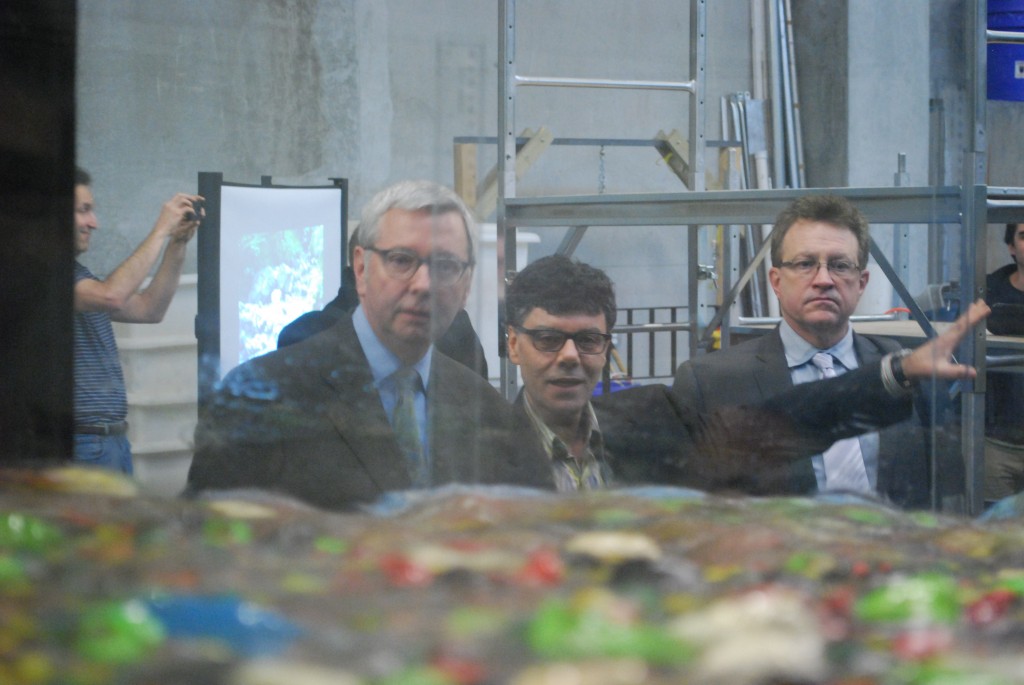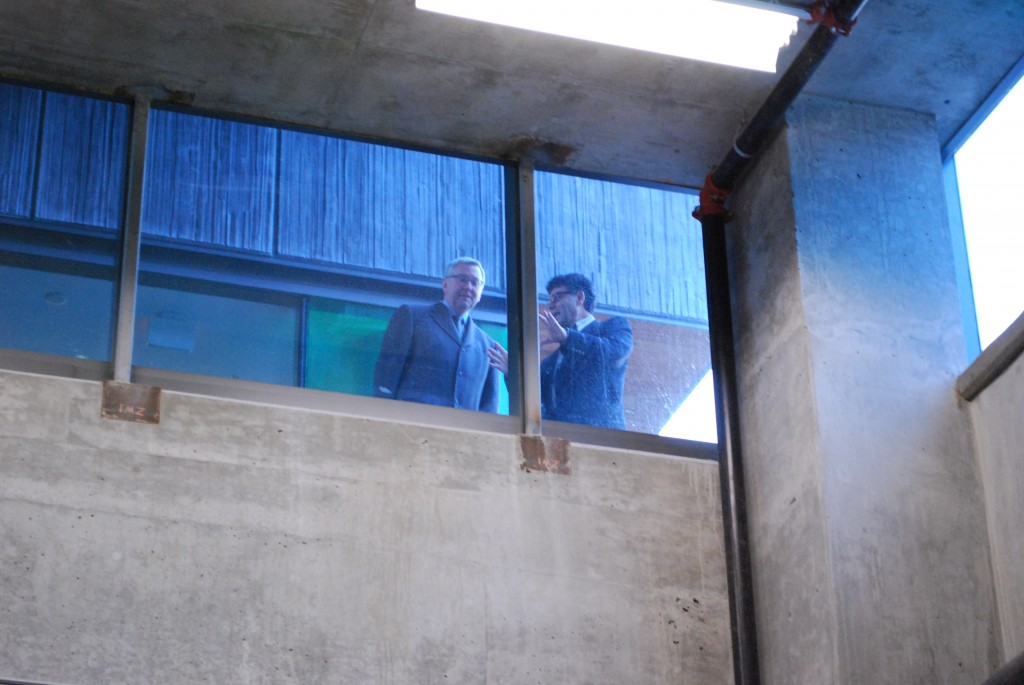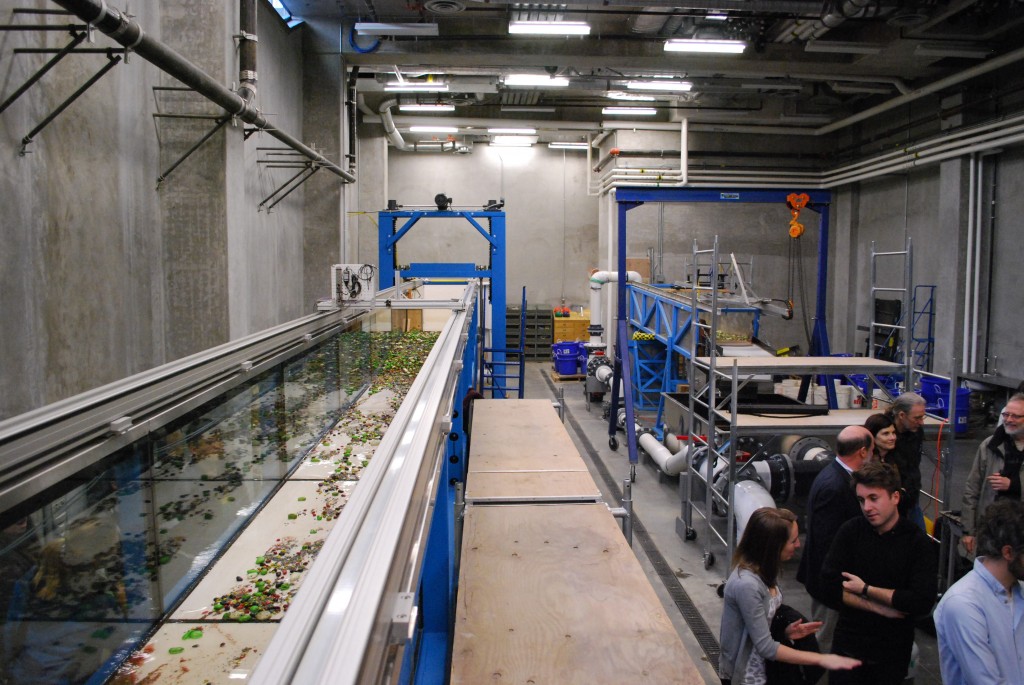The new Biogeomorphology Experimental Laboratory in Ponderosa Commons officially opened on January 23rd 2014, the outcome of four CFI grants amounting to approximately $3 million. The laboratory resides in the basement of Ponderosa Commons West, as a part of a university-wide effort to create, as Dean of Arts, Gage Averill elucidated at the grand opening, “student housing that had imbedded within them an academic enterprise. The idea is to put students closer together with the campus so they can see the kind of research and pursuits that go on here… we want open windows on the university’s work.”
In particular, this new lab is designed to establish an experimental laboratory to conduct innovative research on the interface between hydrology, geomorphology, ecology and climate (environmental sciences). Such a lab is unique in Canada with only one or two in the U.S.; this lab will put UBC research on the frontiers of science as there are both great scope and great demand for innovative and fundamental research in environmental sciences. Research in these topics is particularly important given the ongoing and anticipated changes to the Earth’s climate and land surface cover. Land-use changes and rising demands for natural resources will put increasing pressure on landscapes, almost certainly leading to significant, progressive deterioration. In order to make significant progress, it is necessary to combine lab experiments, computer modelling, and available long-term data sets in the research.
President Stephen Toope addressed the faculty, students, and staff at the grand opening of the lab; “I really admire the tremendous interdisciplinary [nature] of the work that takes place through Geography at the University of British Columbia. Just hearing snippets of what goes on in this lab makes me realize how many different fields of study are brought together to produce the kind of knowledge that we hope can benefit the world.” Because physical geography labs are essential for researchers in Geography as well as other UBC departments such as Civil Engineering, EOS, and Forestry, it will also foster strong linkages between discipline-specific research groups. Such interdisciplinary scientific effort is necessary in developing predictive tools that could be used to inform effective and sustainable management of freshwater resources, including habitat restoration and riparian vegetation.
Photos by Bret Petersen
Originally published in UBC GEOGRAPHER January 2014





